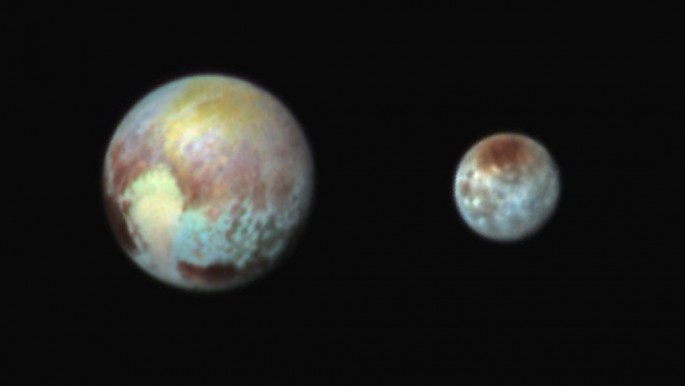NASA's New Horizons probe recently completed its historical flyby of Pluto this morning where the successful mission captured precious data and images of the dwarf planet. The closest approach occurred at 7:49 EDT where the spacecraft zoomed within 7,800 miles of Pluto's surface. NASA then revealed a stunning image of Pluto and its distinct "heart" feature on its face.
The flyby was broadcasted live over the New Horizons mission control center located at John Hopkins University Applied Physics Laboratory in Laurel, Maryland where more than 1,200 scientists, 200 reporters and NASA guests and dignitaries were able to chant a countdown to its closest approach.
New Horizons will study the Pluto system with the help of a suite of several scientific instruments including cameras such as the Ralph camera and the LORRI (Long Range Reconnaissance Imager) that will provide first, unprecedented views of the dwarf planet's complex surface.
These observations can help researchers and scientists map out the surfaces of Pluto and its largest moon, Charon with incredible detail and describe the system's diverse geology which can provide a better understanding for Pluto's barely there, wispy atmosphere and other meteorological events.
The latest images reveal the Pluto system's interesting geological features such as a polar ice cap and this bizarre, heart shaped feature and a massive dark patch where mission scientists have named it as "the whale". Charon on the other hand, consists of craters and canyons and also possesses a mysterious dark cap on its northern polar region.
According to principal investigator Alan Stern, the Pluto system is enchanting with its strangeness and alien beauty. There are already complex and distinct features that are observed on the surface where these could provide clues of a dynamic, explosive past, how Pluto and Charon found each other.
The program set for New Horizon is called a close encounter mode which will last for nine days until Thursday, July 16. However, all data from New Horizons will not be completed at the end of this week, as the probe will transmit a deluge of data and observations for the next 16 months.
Mission team members are ecstatic yet anxious as New Horizons is traveling at remarkable speeds of 30,800 miles per hour which can cause collision with any space debris on its path when it's at its closest to the Pluto system that even anything as small as a grain of rice can be disastrous.
The team hints at a chance to study at another Kuiper Belt object after Pluto, where they intend to propose another flyby of another smaller body for 2019.
NASA's New Horizons spacecraft successfully "phones home", sending a signal at 9:02 P.M. EDT today indicating the success of the flyby mission.



























